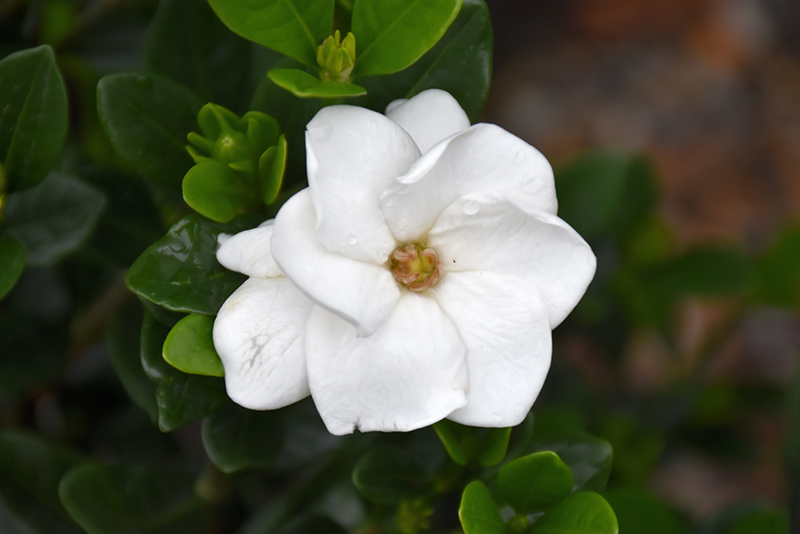Height: 8 feet
Spread: 8 feet
Sunlight:
![]()
![]()
Hardiness Zone: 8b
Other Names: Cape Jasmine, Cape Jessamine, Jasmin
Description:
An evergreen flowering plant with sweetly fragrant, elegant white flowers contrasted by deep green, glossy foliage; a wonderful garden accent plant or hedge in warm climates; water more often in extreme heat
Ornamental Features
Gardenia features showy fragrant white flowers at the ends of the branches from late spring to early fall. The flowers are excellent for cutting. It has attractive dark green evergreen foliage which emerges light green in spring. The glossy pointy leaves are highly ornamental and remain dark green throughout the winter.
Landscape Attributes
Gardenia is a dense multi-stemmed evergreen shrub with an upright spreading habit of growth. Its average texture blends into the landscape, but can be balanced by one or two finer or coarser trees or shrubs for an effective composition.
This is a relatively low maintenance shrub, and should only be pruned after flowering to avoid removing any of the current season's flowers. It is a good choice for attracting bees and butterflies to your yard. It has no significant negative characteristics.
Gardenia is recommended for the following landscape applications;
- Accent
- Mass Planting
- General Garden Use
Planting & Growing
Gardenia will grow to be about 8 feet tall at maturity, with a spread of 8 feet. It has a low canopy, and is suitable for planting under power lines. It grows at a slow rate, and under ideal conditions can be expected to live for approximately 30 years.
This shrub does best in full sun to partial shade. It does best in average to evenly moist conditions, but will not tolerate standing water. It is very fussy about its soil conditions and must have rich, acidic soils to ensure success, and is subject to chlorosis (yellowing) of the foliage in alkaline soils. It is somewhat tolerant of urban pollution. Consider applying a thick mulch around the root zone in winter to protect it in exposed locations or colder microclimates. This species is not originally from North America.
This plant is not reliably hardy in our region, please use with caution in areas where hardiness is a factor.


